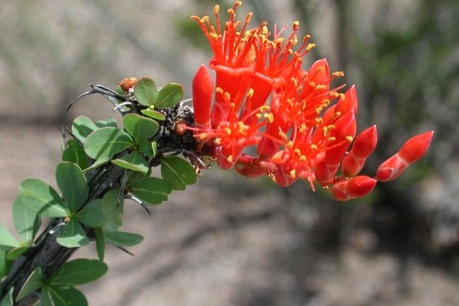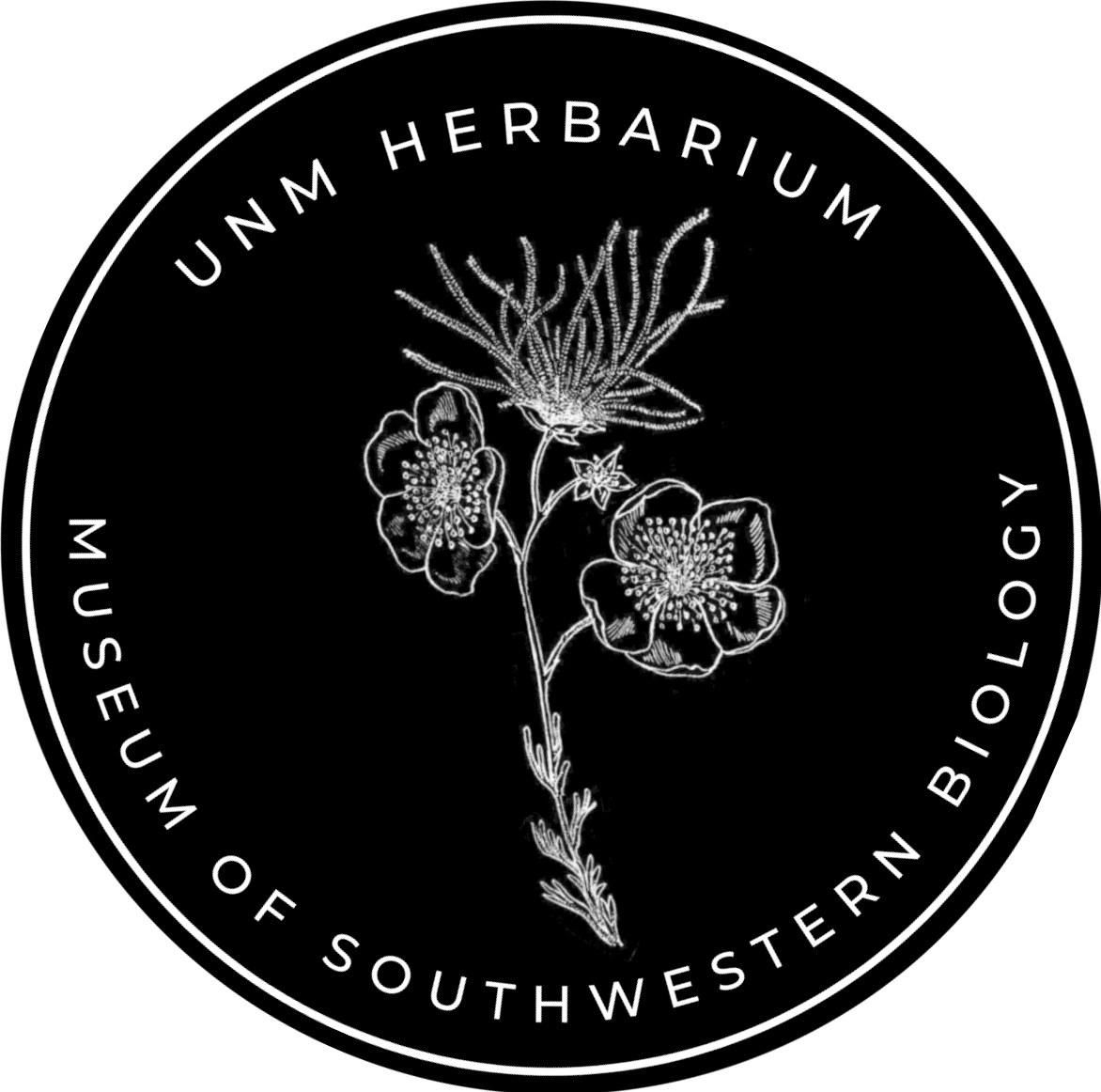Phyletic Relationships Among Species of Fouquieriaceae
Specimens in the UNM Herbarium serve as references for investigations into the evolutionary relationships of plants. Over time the number of tools available for delimiting plant taxa and investigating groups of plants have increased. In addition to providing morphological and anatomical information, reference material also has subcellular information. Using genetic markers, it is possible to further refine relationships that were difficult to decipher solely on the basis of physical characteristics. he Ocotillos, members of the plant family, Fouquieriaceae, are one such group. Recently Joanna Redfern investigated this family and the evolutionary relationships within it. She was able to draw inferences into the speciation and the spread of these striking desert plants over time.

The Fouquieriaceae of North America is an autochthonous endemic family of desert and dry-tropic adapted plants. Until recently phyletic relationships among species of Fouquieriaceae, and between Fouquieriaceae and other plant families have been poorly resolved. In this study, DNA sequence data from one nuclear region (waxy) and one chloroplast region (rpoB-trnC) together with AFLP data were used to infer phylogenetic relationships among all 11 species of Fouquieriaceae and 3 outgroup species. Results from all analyses support the delimitation of two subgenera (Bronnia and Fouquieria) within the family, contradicting the last two analyses of the family, which identified three subgenera. Although the results support an ancient origin for the family (~100 Ma), there is little genetic differentiation among Fouquieria species. This lack of resolution is due to a slow rate of molecular evolution apparently related to the life history of these long-lived species. This result also conforms to a pattern of recent expansion and radiation of species into North American deserts related to the recent formation (7-10 mya) of these deserts. Analyses of waxy indicate a possible mode of speciation for the three polyploid species (F. columnaris, F. diguetii, F. burragei), which occur in Baja California.



